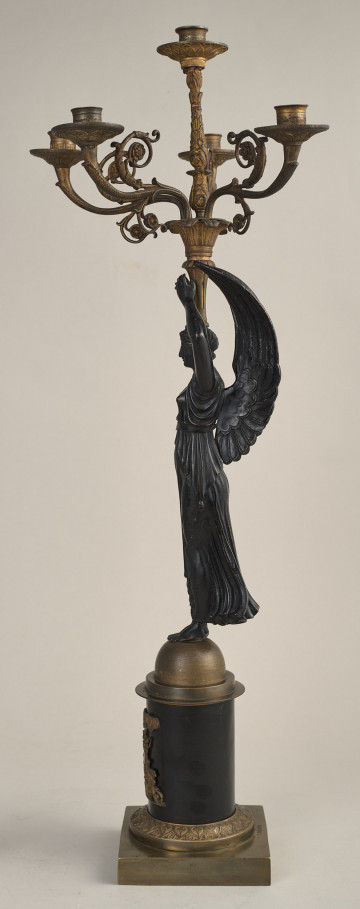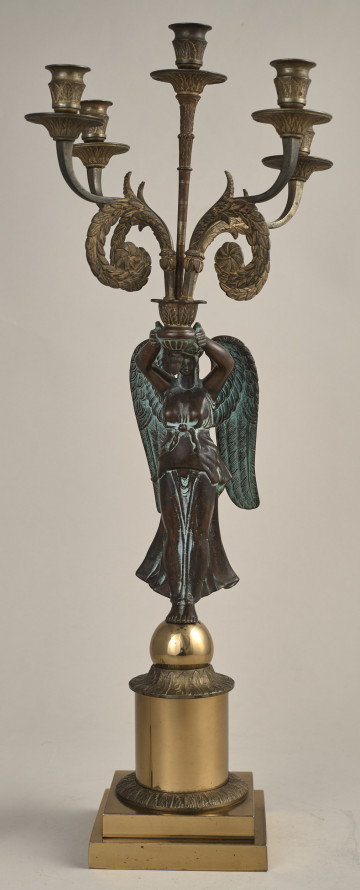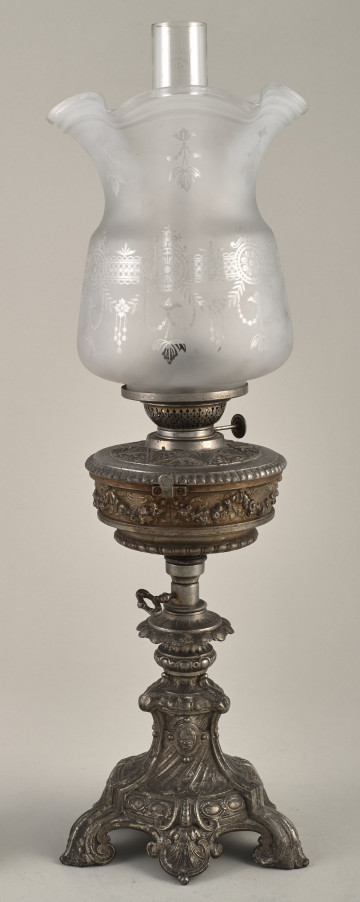
Candelabra
19th (?) century
Castle Museum in Łańcut
Part of the collection: Lampy, żyrandole i kinkiety
A candelabra is a standing candle holder, tall, made of metal, often painted and gilded. This type of lighting has been known since ancient times. In the 17th century, two-arm candlesticks (for two candles) were the most common, in the 18th century – three-arm candlesticks, and in the 19th century – multi-arm candlesticks. The candle as a source of light was widely used until the invention of the light bulb, that is until the 19th century, then its use was dictated by aesthetic values. Candles were already known in ancient times, their wicks were made of linen covered with beeswax; in the homes of the less wealthy inhabitants, animal fat was used instead of wax (tallow candles). The Łańcut candelabra from the museum’s collection in the Empire style, has five lights, is made in brass and copper, and dates from the 19th century. The base of the candlestick is made of polished and gilded brass in the shape of a cylindrical pedestal topped with a sphere. It rests on a square profiled base. The shaft is made of copper, artificially patinated, in the shape of a winged Nike, holding a bowl in both her upraised hands. S-shaped arms, curved upwards emerge from the bowl, decorated with two volutes. The arms end in rolled sleeves in which the candles are set.
Author / creator
Dimensions
height: 71 cm
Object type
Lamps, chandeliers and sconces
Technique
cast
Material
bronze
Origin / acquisition method
decyzja administracyjna
Creation time / dating
Creation / finding place
Owner
Castle Museum in Łańcut
Identification number
Location / status

19th (?) century
Castle Museum in Łańcut

19th (?) century
Castle Museum in Łańcut

19th (?) century
Castle Museum in Łańcut
DISCOVER this TOPIC
National Museum in Lublin
DISCOVER this PATH
Educational path